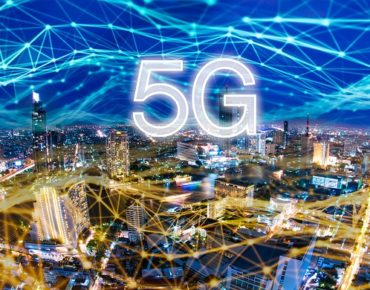Open 5G Push Seen Attracting Hyperscalers

The technology lines are being drawn in the race to deploy 5G wireless networks that would underpin emerging enterprise applications ranging from the Internet of Things a host of software-defined services.
The opening of interfaces on those costly networks could also attract new hyperscale players such as pubic cloud giants, network equipment vendors say.
While hardware in the form of antennas and RF front-ends remain critical for 5G deployments, a coalition of western companies seeking to catch up with networking equipment leader Huawei Technologies are touting the virtues of virtualization. Software-defined 5G radio access networks and perhaps even core infrastructure and transport have “tremendous potential” to hasten a 5G rollout while reducing development costs and seeding a western 5G ecosystem, they assert.
Advocates of a so-called “Huawei alternative” called Open Radio Access Network stress the huge 5G investments required for networking gear, wireless spectrum and development—then ensuring device security for IoT and other deployments.
“Let’s lower barriers to entry and open 5G interfaces to bring in more players,” said Bob Everson, Cisco Systems’ senior director of 5G architectures. Cisco and other members of industry group called the Open RAN Policy Coalition are promoting Open RAN as a competitor to Huawei as well as Ericsson, Nokia, Samsung and China’s ZTE.
Huawei, which has launched an aggressive public relations counteroffensive against Trump administration efforts to cut off access to U.S. semiconductor and other technologies, downplays OpenRAN as a different radio base station implementation that, like Huawei, must comply with existing wireless technology standards.
While Open RAN has mostly been used in rural areas as a network gap-filler, proponents point to the largest full-scale deployment of the technology by Japanese retailer Rakuten, which is reportedly scheduled to launch in September. Unlike other “rip and replace” 5G deployments, the Japanese network is based entirely on Open RAN.
Rakuten’s network relies on a “small cell” approach that is promoted as better suited to delivering 5G bandwidth, throughput and low latency needed for IoT and other emerging applications. The result is “secure, flexible and dense networks,” said Dean Brenner, senior vice president for spectrum strategy and policy at wireless chipmaker Qualcomm Technologies Inc.
Qualcomm’s wireless chips are being used in small cells based on Open RAN. Dense network architectures bring base stations closer to users to boost 5G connectivity, Brenner said. That’s the approach Japan’s Rakuten is taking in its “green field” 5G deployment.
Despite the push toward network virtualization and open interfaces, network security remains a paramount concern for IoT and other 5G deployments, prompting U.S. moves to pressure allies not to use Huawei equipment. Qualcomm stresses embedding security into devices. Brenner said its software-compatible, small-cell chips are due out by year’s end.
Network equipment providers also note that open 5G network interfaces could attract a range of new players, including public cloud vendors that are dipping their toes in the nascent 5G market. For example, Amazon Web Services is collaborating with Verizon on a 5G edge service called Wavelength.
Elsewhere, Microsoft has launched Azure Edge Zones to deploy cloud services to edge computing infrastructure while Google Cloud recently unveiled it mobile edge cloud strategy. Virtual architectures might usher in new approaches like “network slicing,” Brenner said, allowing new entrants to monetize costly 5G infrastructure.
Microsoft has gone a step further, acquiring Metaswitch Networks, a virtualized network software vendor. “As the industry moves to 5G, operators will have opportunities to advance the virtualization of their core networks and move forward on a path to an increasingly cloud-native future,” Microsoft said announcing the deal.
The acquisition announced in July builds on the earlier purchase of Affirmed Networks, another virtualization specialist.
The three public cloud vendors are members of the Open RAN coalition.
Those moves are all to the good, Open RAN backers note. “Let’s not underestimate the new players who can now get into this ecosystem, specifically the big cloud players like Microsoft and AWS,” said Ashish Sharma, president of IoT and mobile solutions as Inseego Corp., a 5G component maker. “If we do it right, the new market developing will see very large software players” enter the 5G market.
Open RAN is increasingly seen as the vehicle for nurturing a 5G ecosystem that serves as a counterweight to Huawei, thereby securing western telecom supply chains. Despite the momentum, observers of what is likely to be a lengthy deployment process remain cautious.
“Initiatives such as Open RAN look promising, but there could be challenges with increased complexity,” notes Will Townsend, senior networking analyst with Moor Insights & Strategy.
Related
George Leopold has written about science and technology for more than 30 years, focusing on electronics and aerospace technology. He previously served as executive editor of Electronic Engineering Times. Leopold is the author of "Calculated Risk: The Supersonic Life and Times of Gus Grissom" (Purdue University Press, 2016).












